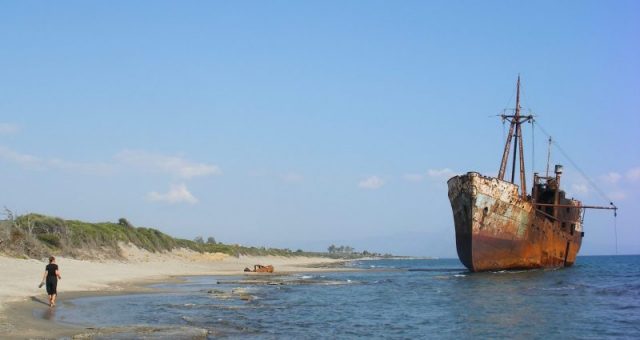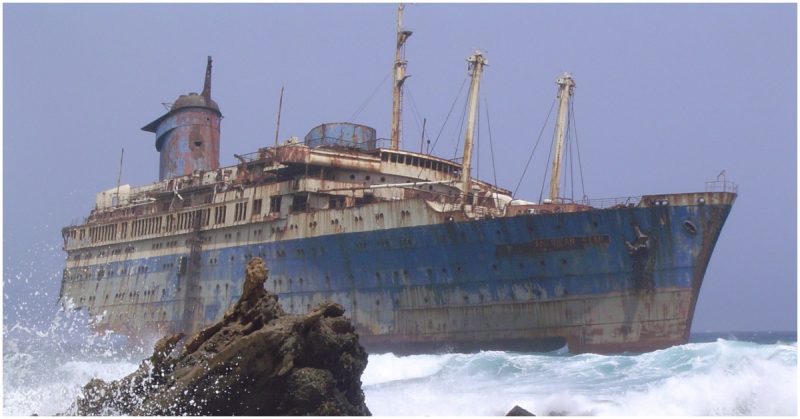Want to capture your own ghost ship? We’re not talking about sailing the high seas flying the Jolly Roger. According to the rules on claiming salvage rights, it is, in theory, easy to bag yourself a beautiful super-yacht without resorting to piracy.
When the crew of Dei Gratia came upon the Mary Celeste abandoned and adrift on December 5, 1872, a month after she set sail from New York City, they soon saw dollar signs flash in front of their eyes.
After pumping out the water that was sloshing around in her hull, the Dei Gratia crew sailed Mary Celeste to Gibraltar where they applied to the British maritime court for salvage rights.

While it is widely believed that if you salvage a vessel adrift on the ocean then she becomes your property, the reality is a little more complex. Sure, it can turn out that, provided you follow the slightly vague complexities of maritime law, you could rescue a boat in distress and end up owning her. In fact, most insurance companies prefer that outcome if it looks like the claim is valid.
Maritime salvage law was originally introduced several centuries ago, when the value of a ship’s cargo was often worth more than the vessel itself.
The aim was to make it worthwhile for another crew to rescue a stricken ship rather than just help themselves to all of the cargo, or worse, leave the stranded sailors to the mercy of pirates rather than put their ship in danger too.

Which is why the amount awarded is commensurate with the risk taken by the salvage team, among other factors. The 1989 Salvage Convention, which was a collaboration to bring international maritime salvage law up to date, introduced Article 13.1(b), “the skill and efforts of the salvor in preventing or minimizing damage to the environment,” as an additional factor in the consideration of the salvage award due.
The law varies in different countries. General principles require that the vessel must be in peril, but this is a loose definition, although it is up to the salvor to prove that damage or destruction might have occurred without intervention; that the salvor must be acting voluntarily and not be under contract to the ship’s Master; that the said Master, if present, would have reasonably agreed to the salvage; plus various other technical details.

Payment is made is paid on a “no cure, no pay” basis so a partial salvage could lead to a successful claim. All of the above has to be assessed in the appropriate maritime court, which can be bypassed if the Master of the ship agrees the amount to be rewarded for successful salvage in advance, known as salvage under contract. In the case of the Mary Celeste, the court suspected foul play so only around one sixth of the value of her cargo was grudgingly awarded to the salvors.
So, here’s how to salvage yourself a ghost ship. First find an unmanned ship drifting on the ocean, preferably one without any actual ghosts on-board. It’s a good bet that the owner wouldn’t say no to being rescued, and if you are near a busy shipping lane or in rough seas then it’s fair to say she is in “perceived danger.” Now all you have to do is attach a line and tow her to safety.
You can hold the vessel you towed to shore in lien, which basically means you keep it as a security to make sure that the owner will pay up. As you can claim up to 100% of the, probably damaged, boat’s value, this is where you might get to keep your prize. Because who wants the hassle of taking their boat back just to sell it in order to pay your salvage fees?

There are a number of professional salvage companies out there, and for good reason. The risks are sometimes high–but so are the rewards. Ships that are damaged need to be patched up, sometimes in foul weather and treacherous seas, but shipping companies are willing to pay a hefty price for this service rather than ending up liable for, yet another, fuel spillage. Salvage companies are also renowned for targeting sunken vessels.
For example, when the armistice that heralded the end of World War I was declared, 74 German warships were surrendered and led to the bay of Scapa Flow near Scotland’s Orkney Islands. To prevent his vessels falling into enemy hands, the German commander, Admiral Ludwig von Reuter, passed an order for them to be scuttled. Most of the 52 ships that were sunk have since been retrieved as salvage for their scrap value, an endeavor kicked off by a scrap-metal dealer named Ernest Cox, who patched up the holes and pumped the ships full of air to re-float them. Those that remain are popular dive sites.
Now that you know the basics of maritime salvage, what are you waiting for? Just don’t forget the plot of Steve Beck’s 2002 movie Ghost Ship if you happen upon a cruise liner that’s been missing for 30 years…
